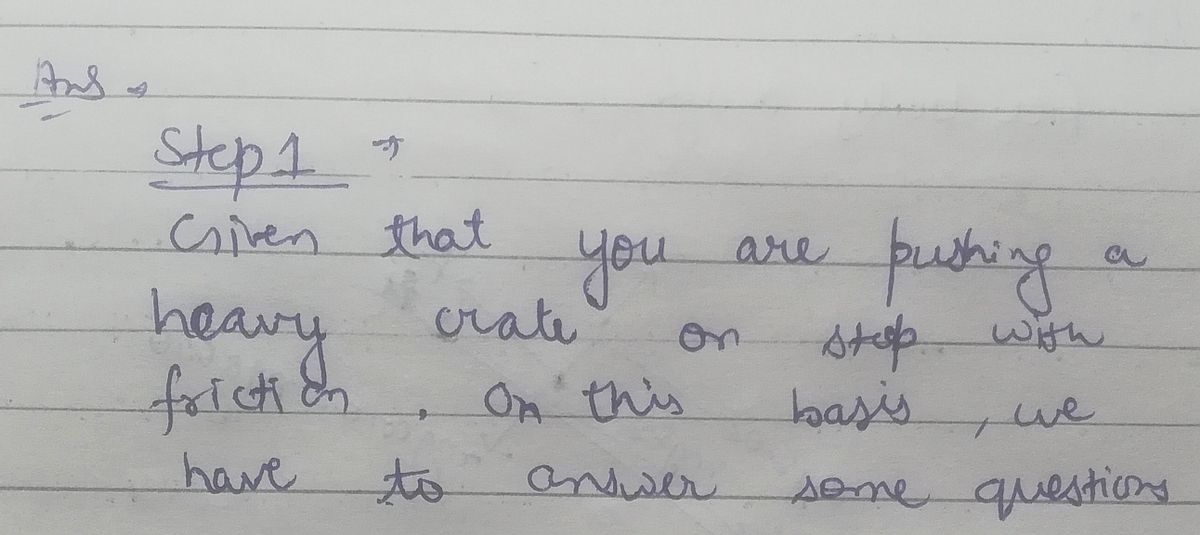a. Draw the force and free-body diagrams for the pushing uphill situation. b. Draw the force and free-body diagrams for when you let go of the crate. c. In words, describe which condition makes the unattended crate not slide back? d. Write the mathematical model for the situation. Under which conditions (m, μ, a) is it safe to let go? e. Do you have other solutions for your conundrum?
a. Draw the force and free-body diagrams for the pushing uphill situation. b. Draw the force and free-body diagrams for when you let go of the crate. c. In words, describe which condition makes the unattended crate not slide back? d. Write the mathematical model for the situation. Under which conditions (m, μ, a) is it safe to let go? e. Do you have other solutions for your conundrum?
Related questions
Question
Hello,
Can someone please show how to solve problem 4?
Thank you!

Transcribed Image Text:3) You are playing "catch" - i.e. passing a ball back and forth - with your little nephew. He
is standing a distance d away from you, and throws you the ball at an angle a with as
much speed v as he can. After your typical fast reaction time tR, you realize that this
throw will be far too short, so you run towards the ball. You catch it after three full
bounces, just before it hits the ground. Whew! (Ignore any effects from the
surrounding air; the bounces are perfect; assume you are catching the ball at the same
height as it was thrown. Simplify the problem.)
a. Draw the position-velocity-acceleration-time graph for the situation; draw the
ball's motion and your motion into the same graph(s).
b. How far from where your nephew is standing are you catching the ball?
c. At what time are you catching the ball?
d. How fast are you running towards the ball?
e. If d = 5 m, a = 45 deg, v = 2 m/s, tR = 0.2 s, calculate the numerical results for
questions b., c., and d.
4) You are pushing a heavy (mass m) crate up a steep, long driveway with your maximum
strength force F. There is considerable friction (with coefficients μs μk) between the
crate and the concrete driveway, but you are doing alright, moving that crate with
constant speed v uphill. Suddenly, your phone rings and you want to let go of the crate
and answer the phone. Should you?
You do not want the crate to slide back at all. Under which conditions (e.g. mass of the
crate versus driveway angle and friction coefficient) is it safe to let go of the crate?
a. Draw the force and free-body diagrams for the pushing uphill situation.
b. Draw the force and free-body diagrams for when you let go of the crate.
c. In words, describe which condition makes the unattended crate not slide back?
d. Write the mathematical model for the situation. Under which conditions (m, μ,
a) is it safe to let go?
e. Do you have other solutions for your conundrum?
Expert Solution
Step 1

Trending now
This is a popular solution!
Step by step
Solved in 6 steps with 6 images
